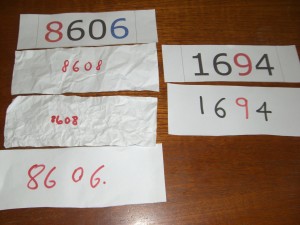KeepIt course module 3, London, 2 March 2010
Principal topic this module: significant properties
Tools this module: PREMIS, Open Provenance Model (OPM)
Tags Find out more about: this module KeepIt course 3, the full KeepIt course
Presentations and tutorial exercises course 3 (source files)
So far in the course we have covered institutions and costs. When do we reach ‘preservation’? We begin that journey into some of the more technical aspects of preservation here, and it will take us into KeepIt course 4 as well, when we will discover tools that can help us with repository preservation workflow from within your repository software.
There is a slightly different structure to this module compared with the first two modules: more tools, more and shorter presentations, and also practicals mixed in, but this module is less about practicals and more a primer for the tools that follow.
[slideshare id=3363963&doc=keepit-course3-intro-100308055942-phpapp02]
The emphasis of the day will be on understanding the significant characteristics of digital objects that might affect preservation decisions. Later we’ll look at tools for recording metadata about these characteristics and preservation actions using PREMIS, an authoritative community-based standard, and the Open Provenance Model, an emerging and perhaps a more concise approach.
First we played a short game. Each group of four people was handed some simple information: three groups received randomly generated numbers on a small piece of paper; one group was handed four playing cards. The groups were asked to transmit the information in various ways, either written or spoken. In each case, the information was to be transferred sequentially between adjacent members and not shared openly with others in the group. The results from two groups, using written and spoken transmission, respectively, are shown below.
We can see that each group were given a PIN-like four digit number that was colour coded. The whispering group (right) transmitted both numbers and colour correctly. They had clearly decided the colouring had significance and retained this information. The writing group chose not to retain the colours. (This evidence was retrieved after an obvious and desperate attempt at disposal!) Had they been handed information identified as a PIN number, for example, this would have been a reasonable omission, because colour has no significance in a PIN. This was not in the instructions, however. In addition, an error was transcoded in the first transmission (top), retained in a second transmission, and somehow corrected in the final result (bottom). This last transcription must have broken the rule about group conferrals, but we can forgive them because it demonstrates how important recording can be in a transmission chain to enable errors to be identified and corrected.
In the case of the group receiving the playing cards, without being told this the information they were expected to transmit was number (or picture) and suit, as these are the two familiar significant characteristics of playing cards, although they may not be commonly referred to in this way.
A simple 10 min game had revealed all the key issues to be covered in module 3:
- the importance of recognising significant characteristics in deciding which aspects of information are to be retained,
- the effect of transmission on information, and
- the need to record data and metadata to identify and correct errors, to record changes and provenance, decisions made and actions taken on data.
Next we will introduce a format preservation workflow and format risks.




0 Responses
Stay in touch with the conversation, subscribe to the RSS feed for comments on this post.